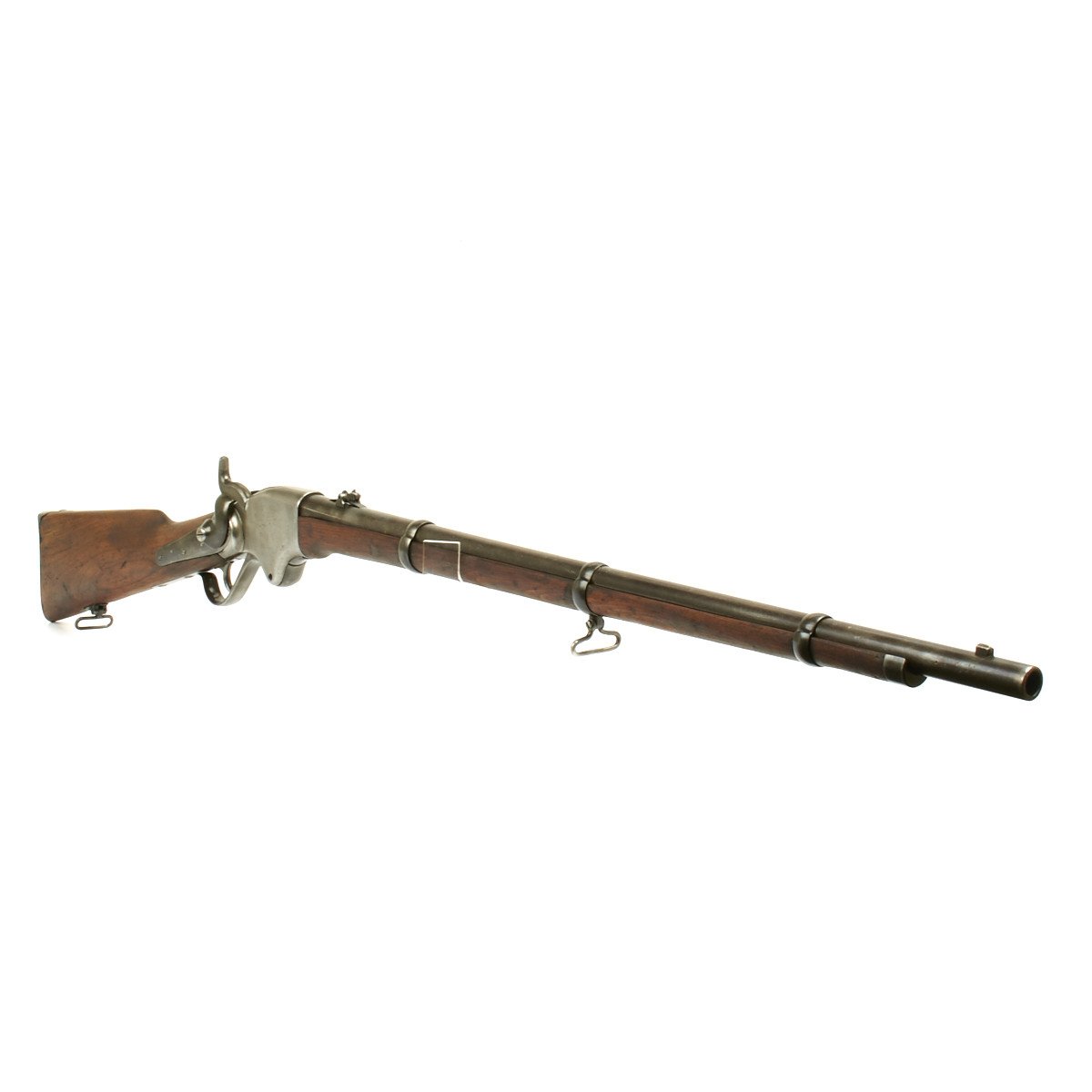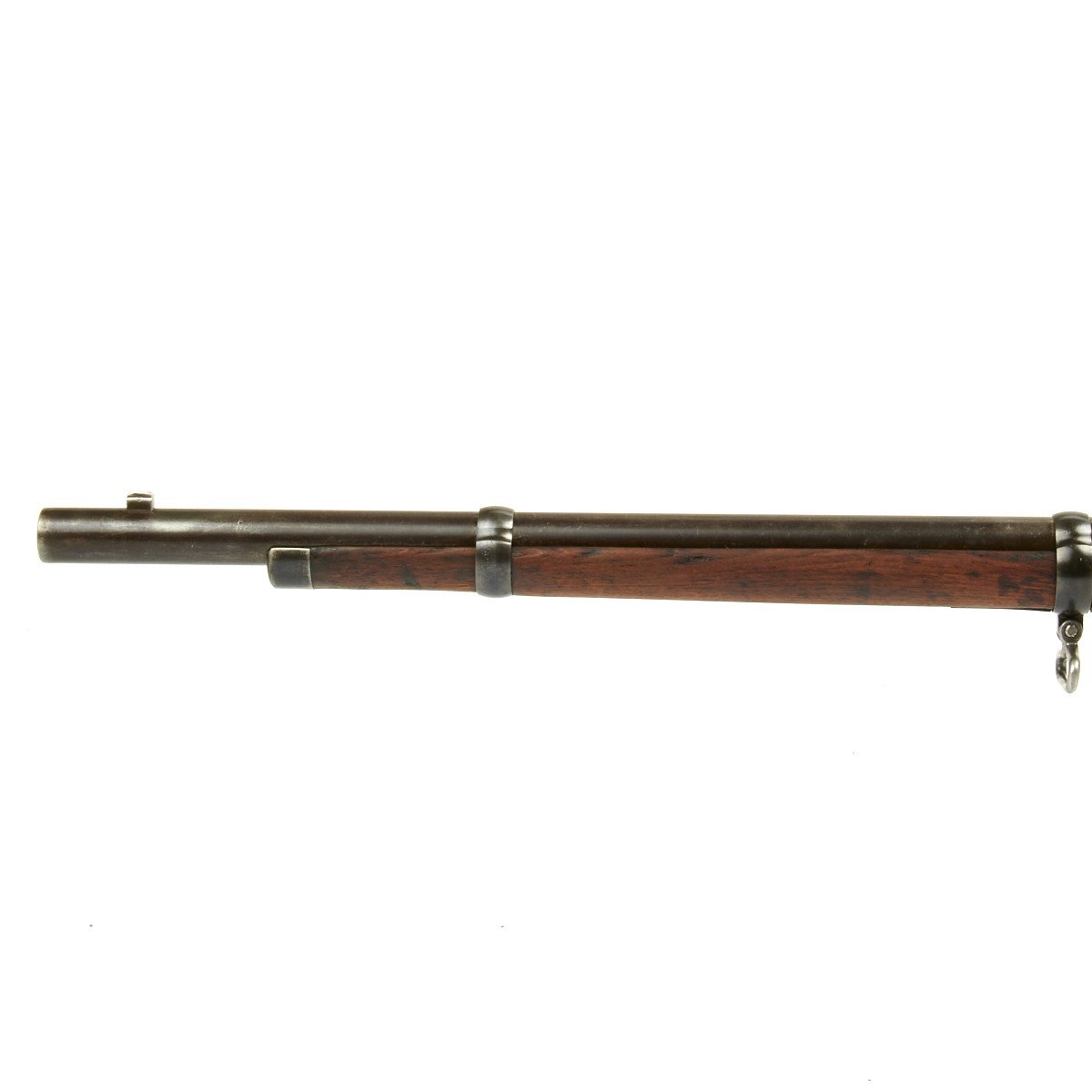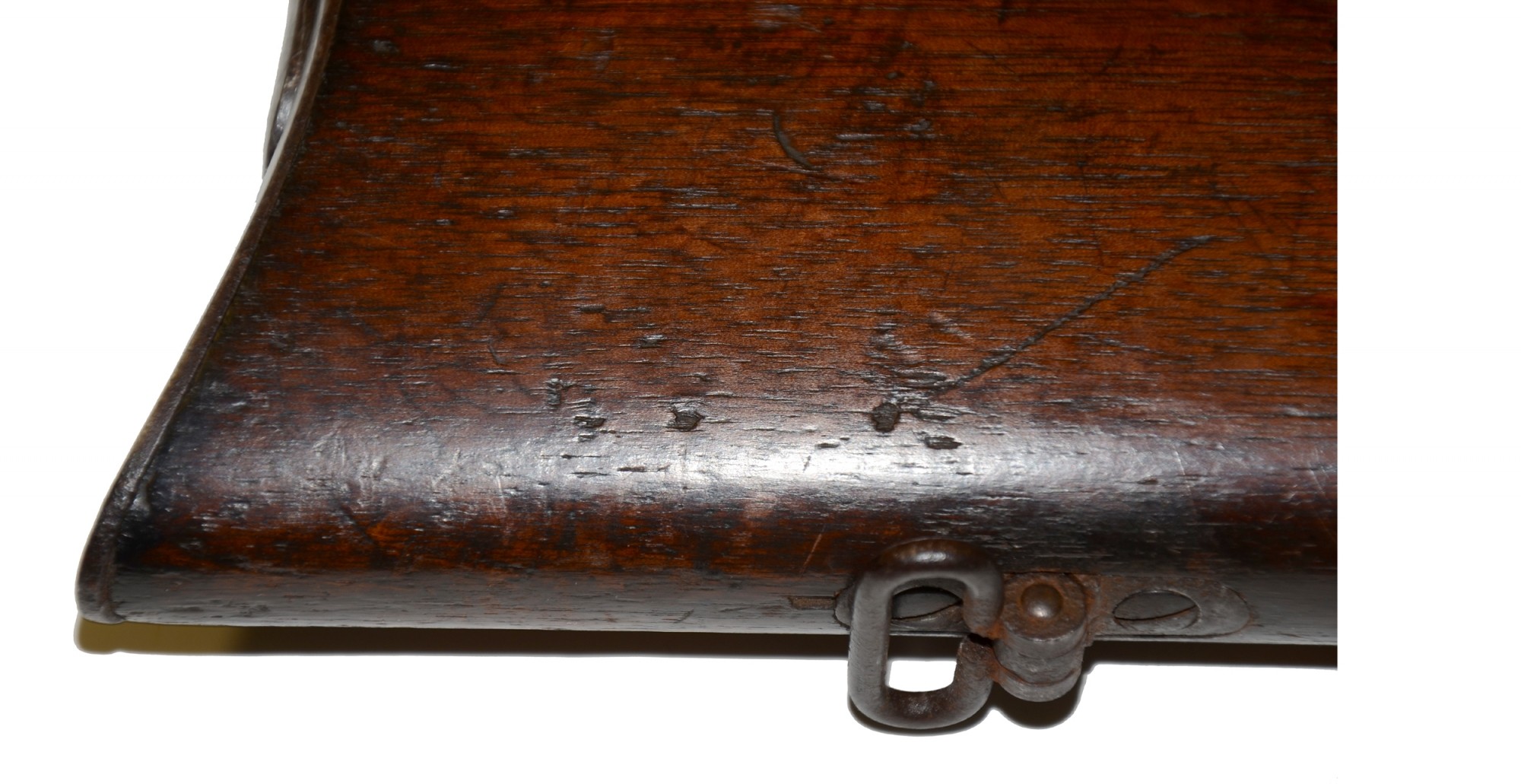

Over 94,000 Spencer carbines were purchased by the Federal government and another 120,000 were purchased privately.This firearm is a Spencer Repeating Rifle, and is made out of a combination of wood and metal. Even when the Confederate army captured Spencer carbines, they were useless because they required rimfire cartridges not manufactured in the South. This lever-action repeater was a formidable opponent against the slow firing muzzle loaders of the Confederacy. The production of the Blakeslee Cartridge Box gave a solider 10 to 13 magazine tubes ready to fire. Basically, all a soldier had to do was cock, aim and pull the trigger. The same motion had the magazine automatically feed another round into the chamber. Lowering the operating lever dropped the breech block, extracting the spent cartridge. The cartridges were fed into the breech by a compressed spring in the magazine. General James Wilson wrote, “There is no doubt that the Spencer carbine is the best firearm put into the hands of the soldier, both for economy of ammunition and maximum affect both physical and moral.” The smaller, lighter gun could fire a magazine of seven copper rimfire cartridges in 30 seconds. Issued late in 1863, the Spencer carbine had a demoralizing effect on the Confederate soldiers. The Spencer carbine was one of the most popular firearms of the Civil War. 52 caliber, forged steel barrel, oiled walnut wood stock and forearm. Physical DescriptionĬirca late 1863 to early 1864 Civil War Spencer breech-loading carbine.

In a matter of weeks, Spencer’s small Boston factory was receiving more orders than it could fill. Lincoln was pleased with the rifle’s accuracy and efficiency. Lincoln presented Spencer with a fragment of the board on their return to the White House. At a distance of forty yards, Lincoln fired seven consecutive rounds into a wooden board, directly hitting a crude bulls-eye with his second shot.

On 18 August 1863, President Lincoln agreed to test the rifle with Spencer on a weedy plain extending from the White House to the unfinished Washington Monument.

Determined to provide Union soldiers with a quicker, more accurate weapon, Spencer took his gun to the White House. By the summer of 1863, Christopher Miner Spencer despaired that the Bureau of Ordnance would never see the merit of his repeating rifle.


 0 kommentar(er)
0 kommentar(er)
